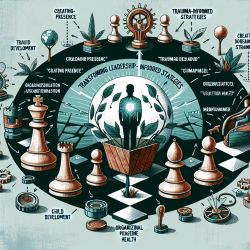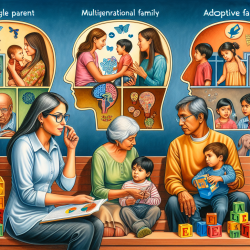Introduction: Embracing the Biocratic Paradigm
In today's rapidly evolving world, leaders are faced with the challenge of navigating complex human systems. The research paper, A Biocratic Paradigm: Exploring the Complexity of Trauma-Informed Leadership and Creating Presence™, introduces a revolutionary approach to leadership that integrates trauma-informed knowledge with biocratic principles. This paradigm shift is essential for creating healthier organizations and better outcomes for children.
The Science Behind Trauma-Informed Leadership
The concept of trauma-informed leadership stems from the understanding that trauma and adversity have profound impacts on individuals, organizations, and societies. The research highlights the need for leaders to develop skills that positively influence organizational change, drawing on the biopsychosocial knowledge base that has emerged from studying trauma survivors.
Dr. Walter B. Cannon's idea of "biocracy" serves as a foundation for this approach. By viewing organizations as living systems, leaders can foster environments that promote healing and growth. This requires a shift in mental models and attitudes, ultimately leading to changes in behavior and organizational culture.
Implementing Trauma-Informed Strategies
To become a trauma-informed leader, one must embrace deep-level change within their organization. This involves understanding the impact of trauma on individuals and systems, and developing strategies to create supportive environments. The Creating Presence™ program offers a comprehensive framework for implementing these changes, focusing on the development of biocratic, trauma-informed organizations.
- Partnership and Power: Promote shared decision-making and empower team members.
- Reverence and Restoration: Foster respect and healing from past traumas.
- Safety and Social Responsibility: Ensure a safe and supportive environment for all.
Encouraging Further Research
The research paper highlights the need for further exploration of biocratic organizations and trauma-informed leadership. Practitioners are encouraged to delve deeper into these concepts and contribute to the growing body of knowledge in this field. By doing so, they can help shape the future of leadership and create lasting change in their organizations.
Conclusion
Embracing the biocratic paradigm and trauma-informed leadership is not just a trend; it's a necessity for creating healthier, more resilient organizations. By understanding and implementing the strategies outlined in the research, leaders can make a significant impact on their organizations and the children they serve.
To read the original research paper, please follow this link: A Biocratic Paradigm: Exploring the Complexity of Trauma-Informed Leadership and Creating Presence™.










